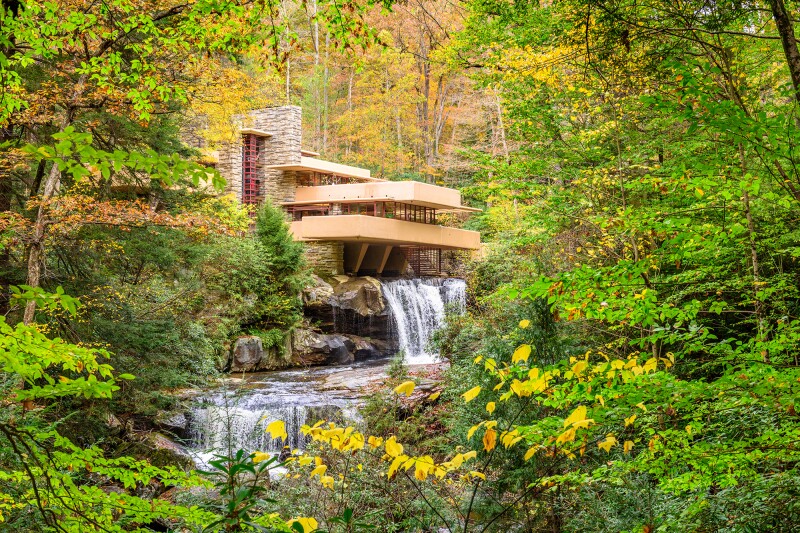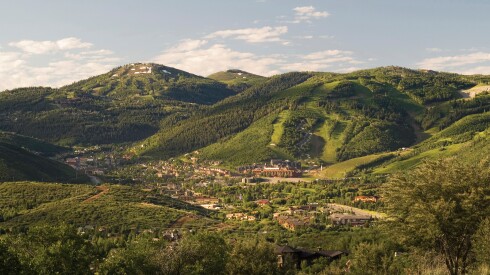After inscribing 20 new sites to its World Heritage List last year, UNESCO added 29 more to the list of global landmarks deemed to have “outstanding universal value” this week. Now places like Vatnajökull National Park in Iceland and Jaipur City in Rajasthan, India, are part of a group of 1,121 cultural and natural sites that includes historical destinations such as the Palace of Versailles in France and Australia’s Great Barrier Reef.
The United Nations’ cultural organization held its 43rd World Heritage Committee session in Baku, Azerbaijan, from June 30 to July 10 this year. During the conference, representatives from 21 member states approved these 29 sites, which were nominated by their countries. Each site added must meet at least one of 10 criteria, such as containing superlative natural phenomena, representing a masterpiece of human creative genius, or a unique cultural tradition.
Here is a closer look at some of the list’s newest sites worth adding to your list of places to go.
The Prosecco Hills of Conegliano and Valdobbiadene, Italy

The picturesque hills of Italy’s prosecco sparkling wine region in Valdobbiadene
Photo by Shutterstock
About 40 miles north of Venice, Italy’s prosecco production area in the hills of Conegliano and Valdobbiadene is the second wine region in the country to be recognized by UNESCO. (Piedmont was added to the list in 2014.) It is also officially Italy’s 55th site on the list, tying it with China as the country with the most UNESCO World Heritage sites. Since the 17th century, wine producers have grown grapes for sparkling wine on the area’s rugged hills in small plots of vines on narrow terraces—known as ciglioni—giving the region a unique and picturesque look.
Plan a Trip With AFAR’s Guide to Italy
Bagan, Myanmar

Novice Buddhist monks walk around the sacred Shwezigon Paya, a pagoda in Bagan.
Photo by R.M. Nunes / Shutterstock
From temples and stupas to archaeological remains and sculptures, this landscape of monumental Buddhist architecture in the central plain of Myanmar is only the second location in the country to be added to the World Heritage List. (UNESCO inscribed the Pyu Ancient Cities, the remains of three walled cities in the Ayeyarwady River basin, in 2014.) Created from a variety of materials including stone, brick, and the gleaming gold of the Shwezigon Pagoda, the area’s temples show the range that the Bagan civilization was able to build when it was at its peak between the 11th and 13th centuries.
For insider access, sign up for the National Geographic Journeys with G Adventures small group tour of the country that takes guests from Mandalay to Bagan and Yangon over the course of 12 days. In Bagan, guests have the exclusive opportunity to visit Kyan Sithar Umin monastery and talk with a monk on daily life and Buddhism in the area.
Book Now: From $2,999 per person for 12 days, based on double occupancy, gadventures.com
The 20th-Century Architecture of Frank Lloyd Wright, United States

Pennsylvania’s Fallingwater house is one of eight Frank Lloyd Wright buildings that were added as a group to the World Heritage List.
Photo by Sean Pavone / Shutterstock
The recent addition of eight Frank Lloyd Wright buildings to the World Heritage List marks the first time UNESCO has recognized modern U.S. architecture. Scattered across the United States from the Guggenheim Museum in New York City to Hollyhock House in Los Angeles and Taliesin West in Scottsdale, Arizona, these eight sites represent some of Wright’s most important contributions to 20th-century architecture.
More Tips for Visiting the UNESCO-Recognized Frank Lloyd Wright Buildings
Vatnajökull National Park, Iceland

A visitor to an ice cave in Vatnajökull National Park
Photo by Zhukova Valentyna / Shutterstock
Vatnajökull National Park is just Iceland’s third UNESCO World Heritage Site. While Iceland has few landmarks on the list, this volcanic national park in the eastern part of the country takes up nearly 14 percent of the island’s territory. In addition to its 10 volcanoes, the area is often visited for its massive glaciers and spectacular ice caves that form underneath them. Hikers will also enjoy the Skaftafell area, which used to be its own national park before being folded into the greater Vatnajökull National Park. There you can hike out to Svartifoss, a waterfall over a dramatic landscape of black basalt columns.
Plan Your Trip With AFAR’s Guide to Iceland
Jaipur City, Rajasthan, India

The Hawa Mahal palace is one of the many buildings that give Jaipur its nickname: the “Pink City.”
Photo by Shutterstock
While the Jantar Mantar, an astronomical observation site in Jaipur, became a World Heritage site in 2010 and the nearby Amber Fort was inscribed in 2013, the entire walled city of Jaipur was added to the list this year. Founded in 1727 in northwestern India, the “Pink City”—nicknamed after the ubiquitous color of buildings seen throughout Jaipur—is being recognized by UNESCO as an exceptional example of urban planning. The city’s founder, Sawai Jai Singh II, built Jaipur on a grid plan—with streets that intersect at public squares in the center—adapting ideas from modern Mughal, ancient Hindu, and Western cultures.
Plan Your Trip With a Local’s Guide to Jaipur
Here are the rest of UNESCO’s confirmed 2019 World Heritage Sites, organized by region:
Africa
- Ancient Ferrous Metallurgy Sites of Burkina Faso, Burkina Faso
Asia
- Korean Neo-Confucian Academies, Korea
- Archaeological Ruins of Liangzhu City, China
- Migratory Bird Sanctuaries along the Coast of Yellow Sea–Gulf of Bohai, China
- Megalithic Jar Sites in Xiengkhuang–Plain of Jars, Laos
- Mozu-Furuichi Kofun Group: Mounded Tombs of Ancient Japan, Japan
- Ombilin Coal Mining Heritage of Sawahlunto, Indonesia
Australia/Oceania
- Budj Bim Cultural Landscape, Australia
Europe
- Royal Buildings of Mafra, Portugal
- Sanctuary of Bom Jesus do Monte in Braga, Portugal
- Churches of the Pskov School of Architecture, Russia
- Erzgebirge/Krušnohoří Mining Region, Czechia/Germany
- French Austral Lands and Seas, France
- Historic Centre of Sheki with the Khan’s Palace, Azerbaijan
- Jodrell Bank Observatory, United Kingdom
- Krzemionki Prehistoric Striped Flint Mining Region, Poland
- Landscape for Breeding and Training of Ceremonial Carriage Horses at Kladruby and Labem, Czechia
- Risco Caido and the Sacred Mountains of Gran Canaria Cultural Landscape, Spain
- Water Management System of Augsburg, Germany
Middle East
- Babylon, Iraq
- Dilmun Burial Mounds, Bahrain
- Hyrcanian Forests, Iran
North America
- Writing-on-Stone / Áísínai’pi, Canada
South America
- Paraty and Ilha Grande, Brazil
>> Next: This Epic Around-the-World Cruise Takes You to 56 UNESCO World Heritage Sites











